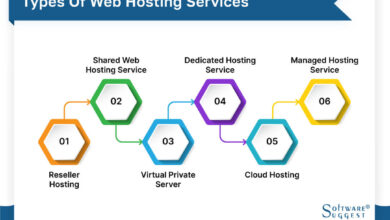
The Dummies Guide to Starting a Business: Master the Secrets for Success!
Starting a business? Read The Dummies Guide to get accurate, to-the-point instructions and advice.
Starting a business can be both exciting and daunting. From coming up with a business idea to creating a solid business plan, there are various steps to take before launching your venture. Whether you are a budding entrepreneur or an experienced professional looking to embark on a new business venture, having a guide that provides you with concise and precise information can be extremely helpful.
The Dummies Guide to Starting a Business is designed to do just that. In this guide, you will find expert tips, step-by-step instructions, and valuable insights to help you navigate every aspect of starting your own business successfully. From understanding market research to securing funding and creating a marketing strategy, The Dummies Guide covers it all. So, if you are ready to turn your business idea into a reality, let’s dive into The Dummies Guide to Starting a Business.
Finding Your Business Idea
Starting a business can be an exciting and rewarding venture. However, one of the first and most crucial steps in the process is finding the right business idea. Identifying a business idea that aligns with your passions and meets market needs is essential for long-term success.
When it comes to starting a business, it is important to choose something that you are passionate about. Why? Because your passion will fuel your motivation and commitment, driving you to overcome challenges and stay focused on your goals. Reflect on your interests and hobbies, and consider how you can turn them into a profitable business. Identify what brings you joy and fulfillment, as it will be easier to put in the long hours required when you genuinely enjoy what you do.
Another crucial aspect of finding your business idea is researching market needs. You want to ensure there is a demand for the product or service you plan to offer. Conduct thorough market research to understand your target audience, their pain points, and their desires. Look for gaps in the market that you can fill with your unique business idea. Finding a niche or a problem that needs solving will give your business a competitive edge and improve your chances of success.
Here are some effective ways to research market needs:
- Talk to potential customers and gather their feedback and insights.
- Study your competitors to understand what they are offering and identify any gaps in their products or services.
- Utilize online tools and platforms to analyze search trends and consumer behavior.
- Stay up-to-date with industry news and developments to identify emerging market needs.
Creating A Solid Business Plan
The first step in starting a successful business is creating a solid business plan. A well-thought-out business plan serves as a roadmap for your entrepreneurial journey, outlining your goals, strategies, and financial projections. A business plan not only helps you clarify your vision and mission but also attracts investors and lenders who can provide the necessary funding.
Understanding Your Business Model
Before diving into the nitty-gritty details of your business plan, it’s essential to have a clear understanding of your business model. Your business model defines how your company creates, delivers, and captures value. It outlines your unique selling proposition and revenue streams.
To clearly define your business model, consider the following aspects:
- Customer Segments: Identify your target audience and understand their needs and preferences.
- Value Proposition: Determine how your product or service solves a problem or fulfills a need for your target customers.
- Channels: Determine the most effective ways to reach and communicate with your target audience.
- Revenue Streams: Define how your business generates revenue, whether through product sales, subscriptions, or other monetization strategies.
- Cost Structure: Analyze the costs associated with running your business, including production, marketing, and operational expenses.
- Key Partnerships: Identify strategic partnerships that can help your business grow, such as suppliers, distributors, or technology providers.
- Key Activities: List the key tasks and activities that need to be performed to deliver your value proposition and operate your business effectively.
- Key Resources: Identify the essential resources your business needs, such as human resources, equipment, or intellectual property.
Setting Clear Goals And Objectives
Once you have a solid understanding of your business model, it’s time to set clear goals and objectives. Without clear goals, it’s challenging to measure your progress and make informed decisions. Your goals should be specific, measurable, achievable, relevant, and time-bound (SMART).
Here are some steps to help you set clear goals for your business:
- Identify Your Long-Term Vision: Determine where you see your business in the next five to ten years.
- Break Down Your Goals: Divide your long-term vision into short-term goals that are achievable within specific timeframes.
- Make Your Goals Measurable: Define metrics or key performance indicators (KPIs) that will help you track your progress.
- Align Goals with Business Objectives: Ensure that your goals align with your overall business objectives and contribute to your success.
- Set Deadlines: Establish deadlines for each goal to create a sense of urgency and accountability.
- Regularly Review and Adjust Goals: Monitor your progress regularly and make adjustments as needed to stay on track.
By understanding your business model and setting clear goals, you lay a strong foundation for a successful business plan. These steps provide clarity, direction, and focus, helping you make informed decisions and stay on course as you navigate the exciting world of entrepreneurship.
Legal And Financial Considerations
When starting a business, understanding the legal and financial aspects is crucial for long-term success. From choosing the right business structure to navigating taxes and permits, these considerations require thorough attention. Let’s explore the key legal and financial factors that every aspiring entrepreneur should bear in mind.
Choosing The Right Business Structure
Choosing the right business structure is a pivotal decision that impacts your company’s legal, financial, and operational aspects. From sole proprietorships to LLCs and corporations, each structure comes with its own set of advantages and disadvantages. Consider factors such as liability protection, tax implications, and management flexibility when determining the ideal structure for your business.
Navigating Taxes And Permits
When establishing your business, understanding how to navigate taxes and permits is essential to avoid potential legal and financial pitfalls. Ensure compliance with federal, state, and local tax obligations while obtaining the necessary permits and licenses. Additionally, consider consulting with a tax professional to effectively manage your business’s tax responsibilities and maximize financial efficiency.
With a thorough understanding of the legal and financial considerations, you can position your business for stable growth and long-term success.
Building Your Brand And Online Presence
When starting a business, building a strong brand and establishing an online presence are crucial steps that cannot be overlooked. These elements are vital for attracting customers, creating credibility, and ultimately growing your business. In this section, we will explore two key aspects of building your brand and online presence – crafting your unique value proposition and utilizing social media and websites.
Crafting Your Unique Value Proposition
One of the first steps in building your brand is crafting your unique value proposition (UVP). Your UVP is what sets you apart from your competitors and clearly communicates the value you bring to your customers.
In order to create a compelling UVP, consider the following:
- Identify your target audience: Understand who your ideal customers are and what they need.
- Analyze your competition: Research what your competitors are offering and find a unique angle that differentiates your business.
- Focus on benefits: Highlight the benefits that customers will experience by choosing your products or services.
- Keep it concise: Craft a UVP that is memorable and easily understood, using clear and simple language.
Your UVP should convey what makes your business special and compel customers to choose you over your competitors. It should be the foundation of your brand messaging and guide all of your marketing efforts.
Utilizing Social Media And Websites
Once you have defined your UVP, it’s time to leverage social media and websites to strengthen your online presence. In this digital age, having a strong online presence is essential for reaching and engaging with your target audience.
Social media platforms provide valuable opportunities for connecting with potential customers, building relationships, and promoting your brand. Consider the following strategies:
- Create engaging content: Share informative and entertaining content that aligns with your brand and resonates with your audience.
- Interact with your audience: Respond to comments, messages, and reviews to show that you value customer engagement and feedback.
- Collaborate with influencers: Partnering with influencers within your industry can help increase your brand visibility and credibility.
- Run targeted ads: Utilize the powerful targeting options available on social media platforms to reach your ideal customers.
In addition to social media, having a well-designed website is essential for building your online presence. Your website serves as your virtual storefront and should reflect your brand identity. Consider the following:
- Create a user-friendly layout: Ensure your website is easy to navigate, with clear calls to action and a visually appealing design.
- Optimize for search engines: Implement best practices for SEO, such as using relevant keywords, optimizing page speed, and creating high-quality content.
- Provide valuable content: Offer resources, blog posts, or videos that provide value to your visitors and establish your expertise in your industry.
- Include contact information: Make it easy for potential customers to get in touch with you by prominently displaying your contact information.
By crafting your unique value proposition and effectively utilizing social media platforms and websites, you can build a strong brand and establish a compelling online presence. These efforts will help attract customers, generate leads, and ultimately contribute to the success of your business.
Effective Marketing And Sales Strategies
When it comes to starting a business, effective marketing and sales strategies are crucial for its success. Targeting your ideal customers and converting leads into sales are two key aspects that can make or break your business. In this post, we will discuss these strategies in detail to help you achieve your business goals.
Targeting Your Ideal Customers
Identifying and targeting your ideal customers is the foundation of any successful marketing strategy. Here are a few steps to help you effectively target your ideal customers:
- Conduct thorough market research to understand your target audience demographic and psychographic characteristics.
- Create buyer personas to gain insights into your customers’ goals, pain points, and purchasing behavior.
- Define your unique selling proposition (USP) to differentiate yourself from competitors and attract your ideal customers.
- Segment your target audience based on their needs, preferences, and behavior to tailor your marketing messages and offerings.
- Utilize data analytics tools and customer feedback to continuously refine your approach and ensure your marketing efforts are reaching the right people.
Converting Leads Into Sales
Converting leads into sales is a crucial step to generate revenue and grow your business. Here are some effective strategies to increase your conversion rates:
- Develop a compelling value proposition that clearly communicates the benefits of your product or service.
- Create an optimized website with clear and user-friendly navigation, engaging content, and strong calls-to-action.
- Implement lead generation tactics such as offering valuable content, running targeted online advertising campaigns, and optimizing your website for search engines.
- Nurture leads through personalized email marketing campaigns, providing relevant and helpful information to guide them through the buying process.
- Invest in customer relationship management (CRM) software to track leads, manage customer interactions, and streamline your sales process.
- Train your sales team to effectively communicate your value proposition and address customer objections.
Implementing these marketing and sales strategies can significantly improve your chances of success in starting and growing your business. By targeting your ideal customers and converting leads into sales, you can effectively reach your business goals and establish a strong presence in your industry.
Conclusion
Starting a business requires dedication, planning, and perseverance. With the right mindset and guidance, anyone can turn their entrepreneurial dreams into a reality. By following the steps outlined in this guide and staying focused on their goals, aspiring entrepreneurs can overcome challenges and build successful businesses.
With the right approach, the sky’s the limit!
Frequently Asked Questions On The Dummies Guide To Starting A Business
What Are The Essential Steps To Start A Business?
To start a business, you need to identify your niche, create a business plan, secure funding, register your company, and market your product or service.
How Can I Choose The Right Business Idea?
To choose the right business idea, consider your interests and skills, research market trends, analyze competition, and assess the potential profitability of the idea.
What Are The Legal Requirements For Starting A Business?
The legal requirements for starting a business include obtaining the necessary licenses and permits, registering your business with the government, and complying with tax regulations.
How Can I Finance My New Business Venture?
You can finance your new business venture through personal savings, loans from banks or investors, crowdfunding, or seeking grants and subsidies.
How Can I Effectively Market My New Business?
To effectively market your new business, you can utilize social media platforms, create a business website, engage in digital marketing, collaborate with influencers, and leverage word-of-mouth advertising.
How Long Does It Take To See Profits In A New Business?
The time it takes to see profits in a new business varies and depends on factors such as market conditions, competition, business strategy, and financial investment. It can range from a few months to several years.




